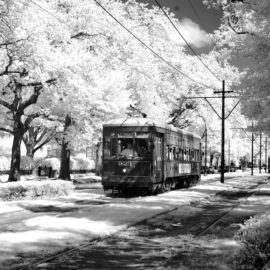
Far bigger and more powerful than this pump but they are up and running now.
The Army Corps of Engineers announced Friday that it had finished repairs on all 17 pumps at three locations that are key to New Orleans’ hurricane protection system after corrosion affected them. The next steps will be removing temporary pumps installed at the London Avenue Canal station, while an investigation to determine the cause of the corrosion continues. The pumps were designed to last 35 years and were only completed about five years ago. The Corps says the state will not be on the hook for the costs for either temporary or longer-term repairs. To ensure there was enough capacity in place for hurricane season, the Corps worked with the Navy Supervisor of Salvage and Diving to install 34 temporary pumps at the London Avenue station, which added 1,000 cubic feet per second pumping capacity. These operated in the absence of pump #1, which has a 1,800 cfs capacity. Removing the temporary pumps should take about one month, and will begin Monday. After all of the external structures have been removed, the Corps will use a horticulturist and arborist to restore the surrounding green space.
nola.com
An overheating pump led to a case of unexplained corrosion.
In July 2021, the Southeast Louisiana Flood Protection Authority-East, which operates the lakefront pump stations, found a pump overheating in the London Avenue station during a routine maintenance check. The cause was determined to be corrosion in February of this year. The Corps then inspected all 17 pumps in the three stations, finding corrosion in several other pumps, though not to the same degree. The other two stations are at the 17th Street and Orleans Avenue canals. The so-called Permanent Canal Closures and Pumps, or PCCPs, are at the ends of the major drainage canals in New Orleans and include gates to keep out Lake Pontchartrain water in advance of tropical storms. When the gates are closed during storms, the pumps are needed to move rainwater from the canals into the lake. They are vital parts of the $14.6 billion hurricane risk reduction system built after the catastrophic levee failures during Hurricane Katrina. Following hurricane season, the Corps will begin a long-term effort to make sure all 17 pumps fulfill their 35-year life expectancy. The work will take place outside of hurricane season and is anticipated to take multiple years.
Now we can rest easier!



